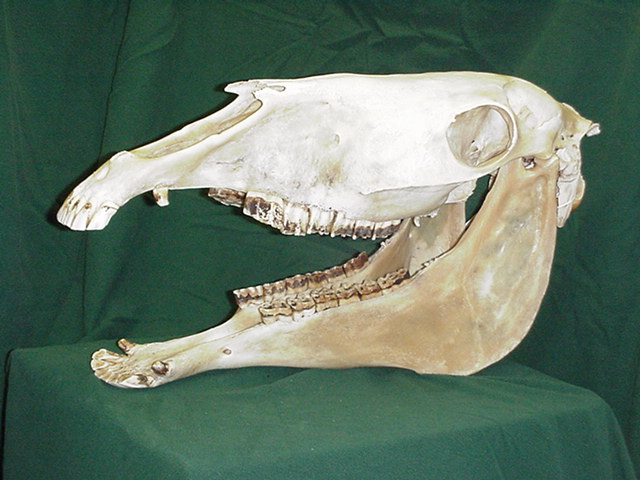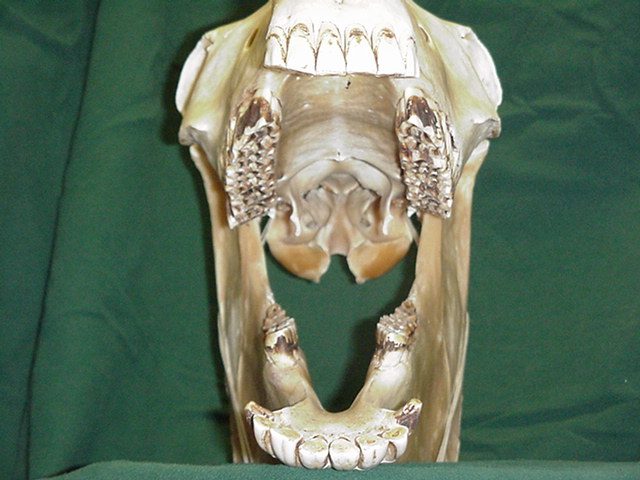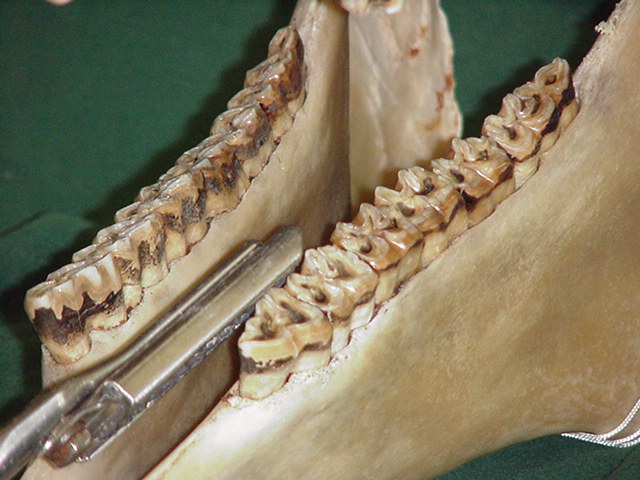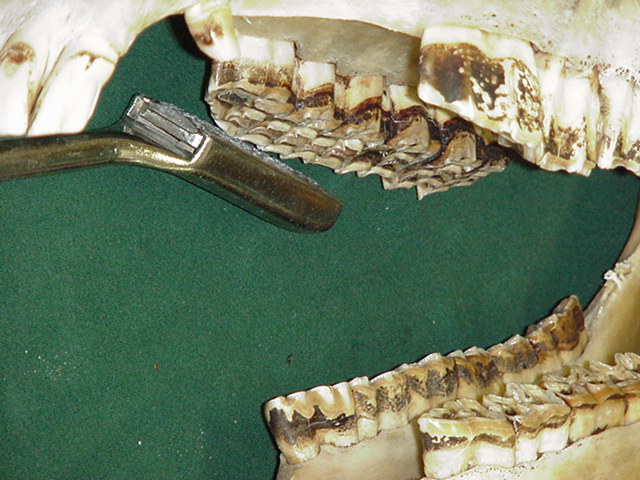Equine Dental Health
Before a discussion on dental health can commence, it is
important to understand the anatomy of the horses head. Pictured below is a typical
equine skull. One can easily visualize the incisor teeth in the front. These
are used to pick grass. To the rear of the space where the bit usually lies are the
molars. The horse has 4 premolar teeth and 3 molars. (The first premolar teeth
are called "Wolf Teeth". These are usually small and seen on the upper
arcade only. They are not present in this photograph.)

The open jaw below demonstrates the molars much better.

The set of rounded teeth just behind the incisors are the canine teeth.
Canine teeth are usually present in male horses only, but they can be found occasionally
in mares.
The front view below illustrates that as horses grind their feed, because the
upper teeth are spaced wider than the lower teeth, the molars develop a slant. When
this happens, and due to the fact that the horse's molars have ridges on the sides of
their teeth, sharp points develop on the inside of the lower teeth and the outside of
their upper teeth. It is these points that can cause a horse discomfort when eating
or when he is being ridden with a bit in his mouth. The smoothing of these points is
a process call "Floating". Horses should have their teeth floated at least
once a year to prevent the points from getting too sharp and interfering with eating and
riding.

Below is a view of the lower dental arcade being floated.

Then the upper molar arcade is done in a similar fashion.

Properly done, all of the sharp edges will be smoothed for his comfort.
Dental care should commence when the horse is young, and at least yearly thereafter.
It is best to have the teeth examined, floated, and wolf teeth removed prior to any
training. This will help keep the horse on the training schedule with a maximum of
compliance with the bit.
Below, a different model demonstrates the finished floating procedure on a lower
jaw. Note the smoothed edges.

Just as in humans, regular checkups will help prevent many problems from
developing!
For more details on dental care and abnormalities, click on the link below.
Australian Equine
Dental Practice
This Page:
 as of 25 October 2004
as of 25 October 2004
![]() I===I===I===I===I
I===I===I===I===I